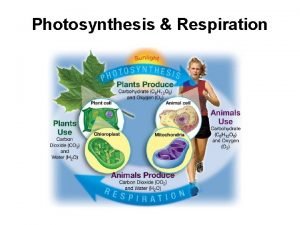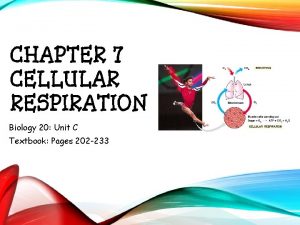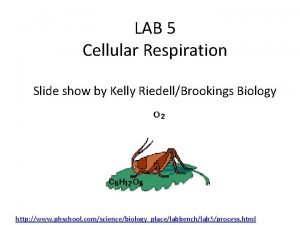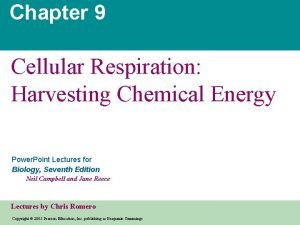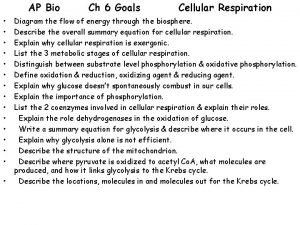Warm up What is cellular respiration Cellular Respiration







- Slides: 7

Warm up What is cellular respiration?

Cellular Respiration

What and Why? Every living thing needs energy to carry out life processes. Growing, reproducing, and moving around are just a few of life’s activities that are fueled by energy. Living things get this energy from food. Cellular respiration is a chemical reactions that break down food molecules to release energy for use in cellular work. All organisms—autotrophs and heterotrophs— require energy and, therefore, carry out cellular respiration.

Mitochondria Cellular respiration breaks apart and rearranges the elements that make up food molecules. These changes release the energy stored in food. The series of chemical reactions used to break food molecules apart it occurs in mitochondria, which are called the powerhouses of the cell.

ATP and Heat(Energy flow) The process that most cells use to release energy is aerobic cellular respiration, which requires oxygen and carbon-based food molecules. When it comes to releasing energy, oxygen can be just as important as food. As molecules are broken down, a great deal of energy is released as heat. But some energy is used to make a molecule called ATP (adenosine triphosphate). ATP is a special molecule that can store energy for the cells to use later. ATP is formed by a molecule called ATP synthase is like a tiny motor that needs energy from the mitochondria to spin, thus creating ATP.

Chemical Equation C 6 H 12 O 6 (sugar) + 6 O 2 à 6 CO 2 + 6 H 2 O AND ATP Energy

Matter and Energy Flow As food molecules are rearranged, most of the energy flows through the system and escapes as heat. But all of the matter is recycled. Every atom that enters the process of cellular respiration can be accounted for. The oxygen that drives cellular respiration combines with the hydrogen in food molecules to form water (H 2 O). The carbon in food molecules becomes carbon dioxide. This gas is released into the environment and is used by autotrophs to make more food during photosynthesis.

